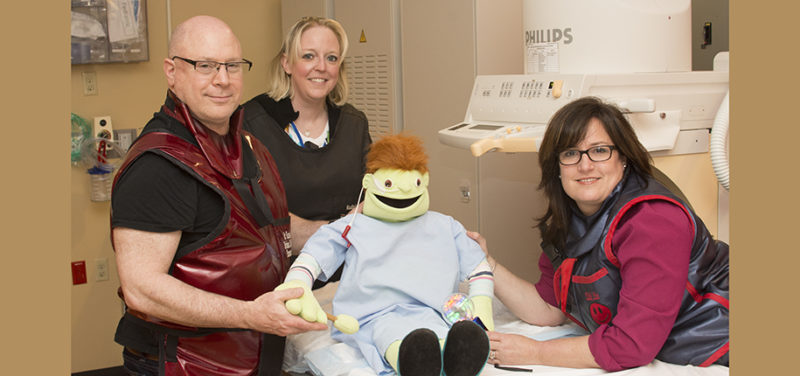
Using a Medical Puppet to Prepare Children for NJ Tube Placements
For many of us eating our favorite food and sipping on a delicious drink is part of our everyday life. However, for some children, eating and drinking is a challenge because of a medical or surgical condition. In these cases, children will often need a feeding tube to help them get the nutrition and medication for their care.
There are different kinds of feeding tubes. Some tubes need to be surgically placed into the stomach or small intestine. Other feeding tubes can be put in at the patient’s bedside by a nurse or doctor. Some tubes, like a nasojejunal (NJ) feeding tube are difficult to get in the proper position unless placed by a Radiologist using a fluoroscopy or special x-ray camera. Using the x-ray camera helps determine that the NJ tube is parked in the beginning part of the small intestine call the duodenum or proximal jejunum.

NJ tubes are like a soft and flexible straw that medicine and nutrition go in through. An NJ tube starts in the nose and then slides down the back of the throat. The tube is moved through the stomach and is then guided into the first part of the small intestine. Getting the NJ tube into the proper location requires experienced manipulation by a Radiologist and the x-ray pictures can help ensure it is in just the right spot.

Having an NJ tube can be scary for some children but meeting “DJ”, a medical teaching puppet can help. “DJ” is designed to have a real NJ tube slide in through his nose and he can “swallow” the tube into his stomach. Child Life Specialists use “DJ” to help explain getting an NJ tube to children of all ages. Some kids watch as “DJ” gets his NJ tube while other kids like to slide the tube into his nose just like the doctor. “DJ” is just one part of the supportive care that the Radiology team can provide if your child needs an NJ tube.
Contributed by Dr. Steven Kraus and edited by Catherine Leopard, (Child Life Spec III).
